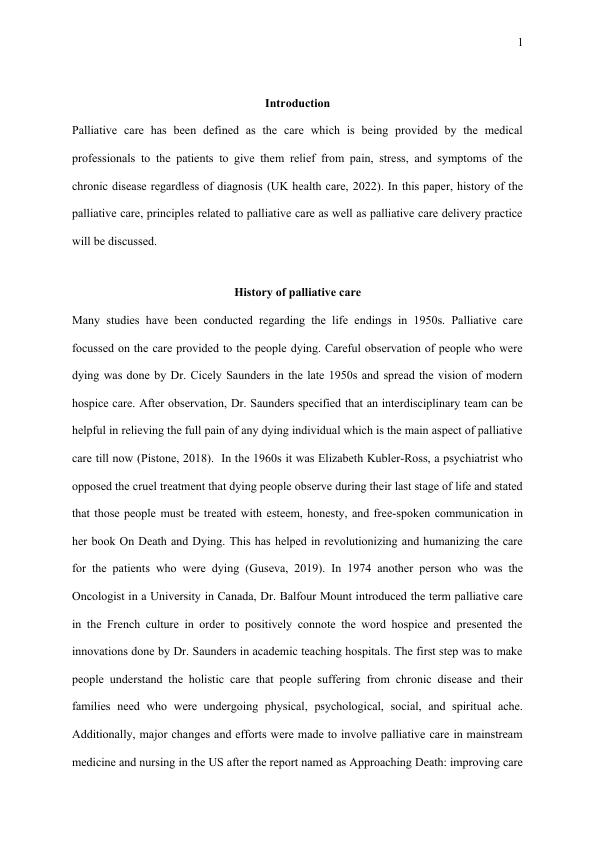History And Principles of Palliative Care
5 Pages1448 Words29 Views
Added on 2022-06-09
About This Document
Medical professionals provide palliative care to patients in order to provide them with relief from pain, anxiety, and symptoms of chronic diseases regardless of their diagnosis. In the 1950s, many studies were done about the end of life. The aim of palliative care is to provide end-of-life care to dying people. There are about 56.8 million people who need palliative care, so 31.1 million of them require such care at the earliest stage of diagnosis while 25.7 million require it near the end of life.
History And Principles of Palliative Care
Added on 2022-06-09
ShareRelated Documents
End of preview
Want to access all the pages? Upload your documents or become a member.
Palliative Care of Patients - Assignment
|7
|2003
|253
Palliative Care: Philosophy, Home-Based, Hospice, Aged Care, Chinese Culture, Nursing Ethics, and Bereavement
|9
|2347
|268
Contemporary Health Issues and Policies: Alzheimer’s Disease and Palliative Care
|11
|3105
|327
Nursing Public Health - Palliative and Hospice Care, Community Health Nurse Role, Ethical Viewpoint and Resource Use
|5
|796
|61
Palliative Care: History, Principles, and Delivery
|7
|1709
|65
Death during Dialysis – A serious Concern
|16
|565
|381


